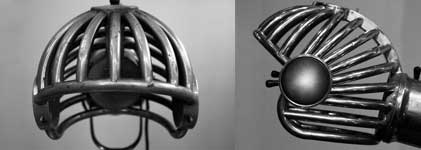This week, all you need to know about the upcoming solar eclipse. But first, a look at Lego’s new Boost building kit and the Cozmo robot companion.
Lego Boost is a great way to help kids have fun building while learning some basic coding
Last week I wrote about a new product, Lego Boost.
It’s a building kit that comes with 847 bricks that can be turned into one of five pre-designed models, which can then be programmed to interact with the builder and its environment.
Developed for 7 to 12 year olds, it’s a great, fun way for anyone to learn the basics of programming, which I believe is an essential skill for the future.
Cozmo is a programmable robot with personality
If your kids are into robots, check out Cozmo. It’s a small device that looks kind of like a bulldozer, but it’s designed with sophisticated artificial intelligence, so it can learn the environment to better navigate. Cozmo even learns to recognize familiar people.
Equipped with a screen to communicate, Cozmo has about a thousand animations that it can use to respond, to you and to situations it confronts. It is through these reactions, and the corresponding vocal responses, that Cozmo is able to show its personality. It it really does have a personality.
The robot comes from Anki, a company started by three graduates from Carnegie Melon’s Robotics Institute. While Cozmo can operate on its own, you can also control it. You can explore the world through it, using a tablet to operate it and see what it sees. And you can also program it with Code Lab, which is based on the Scratch coding language develped at the MIT Media Lab, which uses simple blocks to enable powerful programming.
Cozmo is priced at CAN$250 and is available in Canada exclusively at Best Buy.
A solar eclipse is happening soon and here’s how you can watch it, safely
I’m going to start with a reminder: Never look directly at the sun. Your eyes may not hurt if there’s no glare, but the radiation you can’t detect could be cooking your retinas. Learn more about eclipse safety from NASA.
Having said that, with proper equipment you can witness the solar eclipse that will happen on Monday, August 21.
There’s a list of approved manufacturers of eclipse viewing products curated by the American Astronomical Society. And your local science centres and museums will have certified products on shelves.
But be wary of anything sold online, particularly at Amazon, where there is no way to verify if the glasses you’re getting actually meet the international standards.
The path of totality of the eclipse cuts across the middle of the United States, including northern Oregon. I know a bunch of people from the Vancouver area who are traveling to Salem, Oregon to witness the event.
In the Lower Mainland of B.C., 90 percent of the sun will be blocked by the moon. Calgary will be about 80 percent, Winnipeg about 75, and Edmonton closer to 70.
The video below shows the path of the shadow, and is from NASA.
The eclipse becomes visible at just after 9 a.m. Pacific time. The totality hits the Pacific coastline at about 10:16 and passes over the Atlantic coast at South Carolina at about 2:50 p.m. Eastern. Total time is about two and a half hours.
Astronomy clubs and science organizations everywhere will be doing something on eclipse day. Here are some free events taking place in the major cities in western Canada. A full list has been compiled by the Royal Astronomical Society of Canada.
Victoria
Vancouver
Edmonton
Calgary
Regina
Saskatoon
Winnipeg
Keep in mind that if it’s a cloudy day and you wouldn’t normally see the sun, you won’t be able to see the eclipse.


Comments
Commenting is closed for this article.